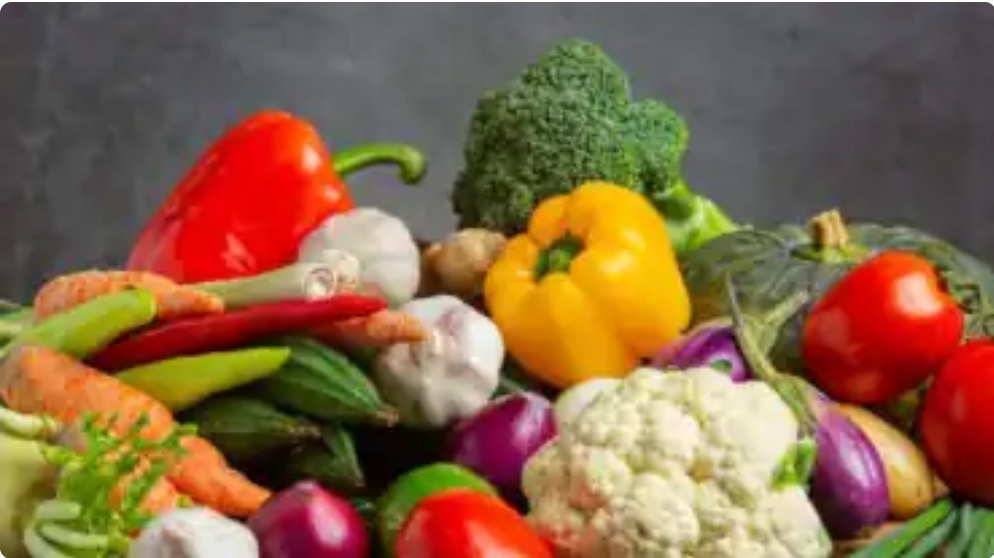Why you must choose a vegetable for a healthy breakfast!

A study published in Nutrients states that conditions such as obesity as well as diabetes can be taken care of if we consume protein-rich food and non-starchy vegetables for breakfast. We need to eat them before we eat food rich in carbohydrates.
Benefits of eating vegetables for breakfast
The Centers for Disease Control and Prevention (CDC) states that only one adult in 10 in the US is eating enough fruits and vegetables. So including these for breakfast is a great option to reach your nutrition goals. Getting more fruit and vegetables in breakfast has a lot of benefits.
1. May boost your mood
Your first meal of the day, sets the mood, right? So why not make it one that is healthy and nutritious? A study, published in Appetite, says that a low-carb, low-fat breakfast, which is rich in complex carbs that are found in vegetables and fruits as well as whole grains can get you in a better mood than a diet full of simple carbs found in breakfast cereals. The study also states that besides mood, participants reported lesser fatigue and more vigour. Also, leafy green vegetables can work as anti-depressants as well, states this study, published in the World Journal of Psychiatry.
2. May improve digestion
Incorporating vegetables in breakfast can give your digestive system a good kickstart. Both fruits and vegetables are high in fibre. While beans, avocados, and sweet potatoes contain soluble fibre, and most vegetables including potatoes and peas, are full of insoluble fibre. Insoluble fibre helps fight constipation by adding bulk, while soluble fibre helps promote the growth of good gut bacteria, and helps fight IBS, Crohn’s disease and ulcerative colitis, states this study in Alimentary Pharmacology and Therapeutics.
3. May help in weight management
One of the biggest benefits of eating vegetables in breakfast is that it can help you lose weight. Both fruits as well as vegetables are low in calories and, hence, are healthy breakfast options if you are on a diet. A study, published in The American Journal of Clinical Nutrition, states that both fruits and vegetables are essential for weight loss. It was observed in the study that participants who consumed a low-energy dense diet were more likely to eat more, but still have low energy. However, those who had fruits and vegetables were able to lose weight.
4. May helps boost immunity
Consuming green vegetables as well as cruciferous vegetables in breakfast can help you stay healthy and boost immunity. This study, published in The British Journal of Nutrition, states that green vegetables and cruciferous vegetables can reduce the risk of type 2 diabetes. A study, published in JRSM Cardiovascular Disease, points out that green and cruciferous vegetables prevent the incidence of heart disease.

How to add vegetables in breakfast?
What can be better than starting your day with a nutrient-rich food? Here are some ways to include vegetables for breakfast:
1. Choose easy options
Common vegetables in breakfast would include easy-to-grab veggies such as chopped-up peppers, or cucumbers and tomatoes. These are great options for getting your energy juices flowing. Breakfast salads are also a great option for breakfast.
2. Change the order of consumption
If you are a big fan of breakfast cereals and don’t want to let it go, then you can opt for a good veggie starter first as well. Try to eat a vegetable for at least 10 minutes before eating something heavy in carbohydrates. Eating non-starchy vegetables before you eat carbs is a good way to maintain healthy blood sugar, states this study, published in Nutrients.
Select Topics of your interest and let us customize your feed.

3. Combine vegetables with a protein source
While there are some high-protein vegetables, combining vegetables with a high-protein option can be beneficial as well. So, you can go for a veggies-topped omelette, whole grain bread with avocado and a vegetable smoothie. A study, published in the journal Diabetes, Obesity and Metabolism, states that combining proteins with vegetables and eating them before carbohydrates, can lower glucose hikes by 46 per cent.
What to not include in a healthy breakfast?
While eating vegetables in breakfast is a great idea, some items should never be included in your breakfast. Try to avoid any fried foods or fatty meats early in the morning. When it comes to breakfast salads, go for homemade dressings instead of store-bought ones, as these are low in vitamins and minerals. The option for dry roasted nuts instead of flavoured or oil-coated ones is another great idea. Although fresh fruit is best, if you have to opt for dried fruit, go for the sugar-free versions.
Summary
Eating a breakfast rich in vegetables and fruits can give you a healthy start. It can make you more active and help you feel less tired during the day. A vegetable and fruit breakfast is also your best friend if you are on a diet as this will be low in calories and will help you stay full for a longer time. Breakfast salads, vegetable preparations such as sandwiches, vegetable omelettes, or just simply cut cucumbers and peppers are great ways to make vegetables a part of your breakfast routine.
Get Latest Updates on Healthy Eating, Nutrition, Recipes, Superfoods
- 150
How to increase potassium levels: Best foods and tips to avoid hypokalaemia

Potassium is an essential mineral for our body. There are multiple health benefits of a potassium-rich diet – from regulating blood pressure and reducing water retention to prevention of stroke, bone issues and kidney stones. If you don’t want to experience issues such as muscle weakness or irregular heartbeats, make sure you get the right amount of potassium. Food is one way to meet the potassium demands by your body, but you can do more. Read on to know how to increase potassium levels.
Why do you need potassium?
Potassium is an electrolyte. Its reactive nature in water empowers it to produce electricity which is vital to the smooth functioning of multiple processes in the body. A potassium deficiency, also called hypokalaemia, can potentially lead to muscle cramps, fatigue, irregular heartbeat and more.
As per the National Institutes of Health, women aged 19 and above need 2,600 mg of potassium every day.

Here are some reasons why you need potassium, as explained by clinical nutritionist Samreen Saniya.
1. Nerve transmission
Potassium plays a key role in nerve impulse transmission which helps in the generation and propagation of nerve impulses. This contributes to proper communication between nerve cells.
2. Muscle contraction
Potassium is essential for normal muscle function. It helps in regulating muscle contractions, ensuring proper coordination and strength in muscle movements.
3. Fluid balance
Potassium is involved in maintaining the balance of fluids in and out of cells. This electrolyte helps regulate osmotic pressure, preventing imbalances which can lead to dehydration or excess fluid retention.
4. Heart function
Potassium is crucial for maintaining a normal heartbeat, and helps in the electrical conduction of the heart. This ensures the proper rhythm and functioning of the vital organ.
How to increase potassium levels?
You can begin by eating the right foods to increase potassium level in your body. Here are some ways to include potassium-rich foods in your diet.
1. Banana
Banana is a convenient and popular potassium source. Add sliced bananas to your bowl of cereal or enjoy them as a snack, suggests the expert. You can also blend two bananas with yogurt or milk to create a potassium-rich banana smoothie.
Select Topics of your interest and let us customize your feed.
2. Sweet potato
Roast or bake sweet potatoes as a side dish. You can even mash them for a nutritious alternative to regular mashed potatoes.
3. Spinach
There are many main course dishes that revolve around spinach. You can also incorporate spinach into salads or omelettes. Combining spinach with carrot and beetroot, and drinking it as a juice is another option.
4. Orange
Besides vitamin C, oranges are a good potassium source. Eat them as a whole fruit or go for fresh orange juice.
5. Avocado
Spread avocado on whole-grain toast. You can also add it to salads to increase your potassium intake.
6. Potassium supplements
Potassium supplements are recommended to people who have been diagnosed with potassium deficiency. Potassium level below 3.5 milliequivalents per liter are generally considered low and may be indicative of hypokalemia, says Saniya. It is a condition characterised by insufficient potassium in the bloodstream.
Some of the potassium supplement options are potassium chloride tablets or capsules, potassium gluconate tablets or liquid. There are also formulations designed to release potassium slowly over time, reducing the risk of upsetting your stomach.
7. Intravenous potassium
If you want to know how to increase potassium levels quickly, you must know that intravenous potassium is also given when the potassium level is very low. Potassium chloride injection is a common form used in hospitals to rapidly replenish potassium level. Potassium acetate injection is another intravenous option, sometimes used as an alternative to potassium chloride.
The choice and dosage of intravenous or oral potassium supplements depends on the individual’s medical condition, potassium level and overall health. Only your doctor should determine the appropriate form and dosage.
Excessive potassium intake, especially through supplements, can result in a condition called hyperkalemia. It might cause symptoms like irregular heartbeat, muscle weakness or numbness. In severe cases, elevated potassium can impact the muscles involved in breathing, leading to difficulty in breathing. So, make sure you don’t overdo it.










